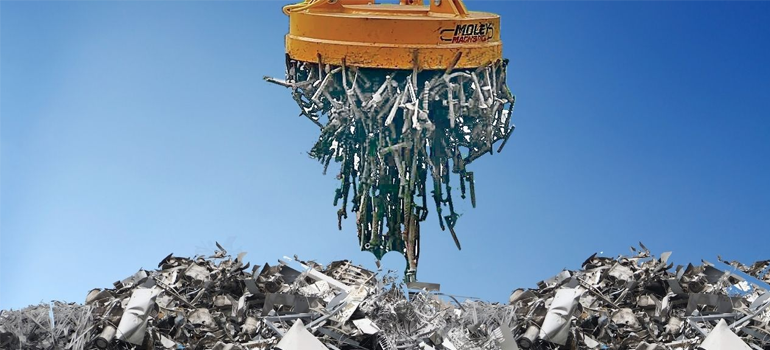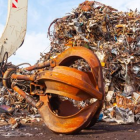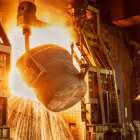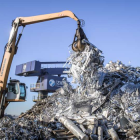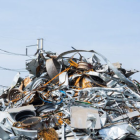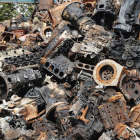Scrap metal recycling is an increasingly popular industry that provides an eco-friendly way to dispose of unwanted materials while simultaneously making a profit. Whether you’re looking to clear out old electronics, appliances, or construction materials, understanding which metals are valuable and how to identify them can make a significant difference in maximizing your earnings.
For beginners, identifying valuable scrap metal can seem challenging, but with a bit of knowledge and some practical tips, you can quickly become proficient. In this blog, we will guide you through the process of identifying valuable scrap metal, providing you with essential tips and insights that will help you get started.
1. Know the Types of Metals
Before diving into identifying valuable scrap metal, it’s essential to understand the two main categories of metals:
* Ferrous Metals: These metals contain iron and are magnetic. They include materials like steel and cast iron. Ferrous metals are generally less valuable than non-ferrous metals but are still widely recycled due to their abundance and uses in construction, automotive, and manufacturing industries.
* Non-Ferrous Metals: These metals do not contain iron and are non-magnetic. Non-ferrous metals are generally more valuable than ferrous metals because they are rarer and often used in high-demand industries, such as electronics, aerospace, and renewable energy.
2. Look for Common Valuable Non-Ferrous Metals
When you’re sorting through scrap, non-ferrous metals should be your primary focus since they tend to be more valuable. Here are some of the most common valuable non-ferrous metals:
Copper
* Appearance: Copper is a reddish-brown metal that may have a greenish patina when it oxidizes. It’s typically found in electrical wiring, plumbing pipes, and various electronic components.
* Value: Copper is one of the most valuable scrap metals due to its high demand for electrical and plumbing purposes. It also has good resale value in both its bare and insulated forms.
* How to Identify: A simple test to check if something is copper is to scrape the surface with a knife. If it reveals a shiny, reddish color, it’s likely copper.
Aluminum
* Appearance: Aluminum is a light, silver-colored metal often found in soda cans, window frames, and car parts. It is lightweight and resistant to corrosion.
* Value: Aluminum is valuable due to its recycling efficiency and demand in the automotive, aerospace, and construction industries. It’s commonly found in many consumer products, making it readily accessible.
* How to Identify: Aluminum is easy to recognize because of its light weight and shiny appearance. It is also non-magnetic and can be found in most household items.
Brass
* Appearance: Brass is a yellowish alloy made of copper and zinc. It’s often used in plumbing fixtures, musical instruments, and decorative items.
* Value: Brass holds a high scrap value because of its copper content, making it a popular metal for recycling.
* How to Identify: Brass has a distinctive golden hue, and it is heavier than aluminum but lighter than copper. A magnet will not stick to it.
Lead
* Appearance: Lead is a soft, grayish metal that can be found in batteries, radiation shielding, and some older plumbing pipes.
* Value: Lead is valuable primarily because of its use in lead-acid batteries. Recycling lead helps reduce the environmental impact of discarded batteries and prevents lead contamination.
* How to Identify: Lead is soft, heavy, and dull gray in color. It can often be found in the form of thick, dense sheets or blocks.
Nickel
* Appearance: Nickel is a silvery-white metal commonly found in stainless steel, batteries, and other industrial alloys.
* Value: Nickel is valuable due to its resistance to corrosion and its use in stainless steel and batteries, particularly in electric vehicles.
* How to Identify: Nickel has a shiny, metallic finish and is often alloyed with other metals. It is also non-magnetic.
3. Spot Common Ferrous Metals
While ferrous metals may not command as high a price as non-ferrous metals, they are still important in recycling. Here are some valuable ferrous metals to watch out for:
Steel
* Appearance: Steel is a strong, durable metal that is typically shiny and silvery-gray. It is often found in appliances, machinery, and construction materials.
* Value: Steel is abundant and often the least valuable of metals, but high-quality steel scrap (like stainless steel) can still command a good price.
* How to Identify: Steel is magnetic, so if a magnet sticks to the metal, it’s likely steel.
Stainless Steel
* Appearance: Stainless steel is shiny and silvery-gray with a higher resistance to rust and corrosion than regular steel. It’s commonly found in kitchen appliances, sinks, and medical equipment.
* Value: Stainless steel has a higher scrap value compared to regular steel due to its alloyed composition of iron, chromium, and sometimes nickel.
* How to Identify: Stainless steel is magnetic in some cases but less magnetic than regular steel. It has a polished look and is often used in household appliances.
4. Use a Magnet for Quick Identification
One of the easiest ways to identify ferrous metals (those that contain iron) is to use a magnet. If the magnet sticks to the metal, it is a ferrous metal. This simple test can help you quickly sort through your scrap and identify what’s worth recycling.
* Ferrous Metals (Magnetic): Steel, iron, cast iron, carbon steel, stainless steel (in some cases).
* Non-Ferrous Metals (Non-Magnetic): Copper, aluminum, brass, lead, nickel, gold, silver.
5. Check for Markings or Labels
Many items made of valuable metals have markings or labels that indicate the material type. Look for manufacturer labels on items like electronics, appliances, and vehicles. These labels might provide information on the metal composition of the item, which can help you identify the scrap metal more easily.
* For example: Copper pipes are often marked with “Type L” or “Type K” for their quality grade, and stainless steel is often stamped with its grade (e.g., 304 or 316).
6. Sort Metals by Color and Weight
When dealing with mixed scrap metal, sorting the materials by color and weight can help you quickly identify the valuable metals. Non-ferrous metals like copper, brass, and aluminum have distinct colors, and their weight can also provide clues. Copper and brass, for example, are heavier than aluminum and have a reddish or golden hue.
7. Work with a Scrap Metal Dealer
For beginners, the best way to learn about valuable scrap metal is by working with an experienced scrap metal dealer. These professionals can help you identify metals you might not recognize and provide valuable advice on how to handle and sort your scrap metal for maximum profit.
Conclusion
Identifying valuable scrap metal is an essential skill for anyone looking to recycle scrap for profit. By understanding the types of metals, knowing which non-ferrous metals are in high demand, using a magnet for quick identification, and working with a professional dealer, beginners can quickly become proficient in recognizing and recycling valuable scrap metal.
With practice, you’ll be able to sort, identify, and maximize the value of the scrap metal you collect, helping you earn a substantial return while also contributing to a more sustainable future.

